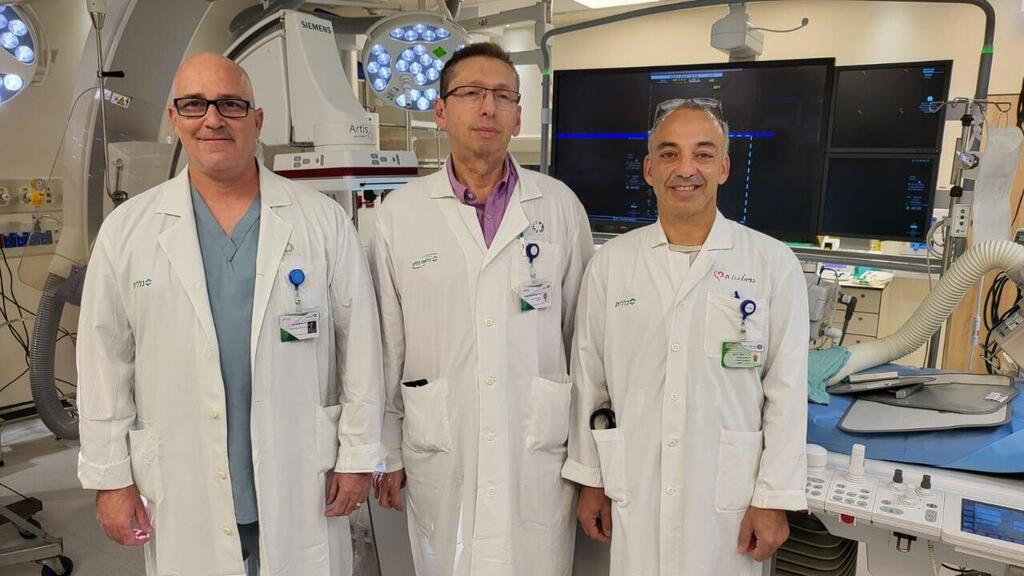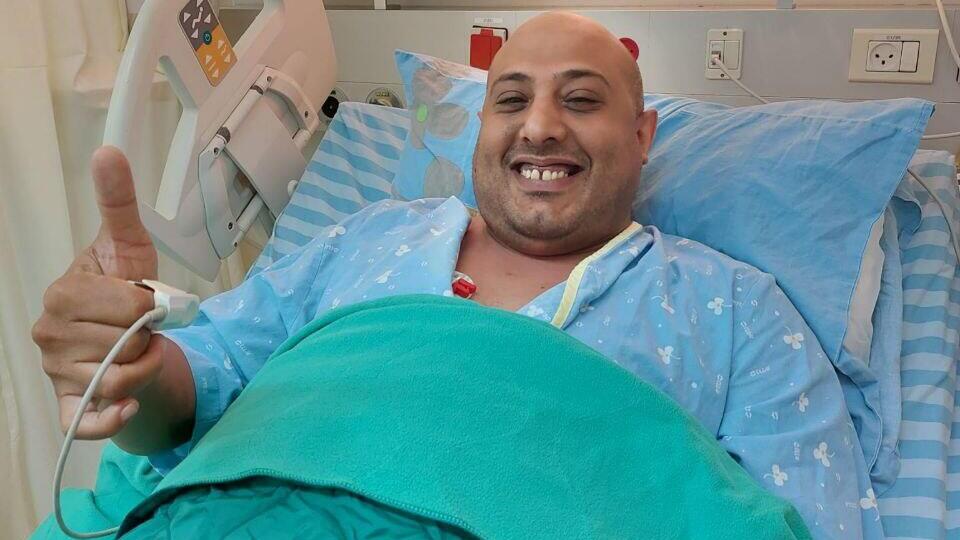Saeed Shakker, a 34-year-old bus driver was born with his heart in the right side of his chest due to a rare defect and was saved by a dangerous heart operation.
Cardiologists in the Carmel Medical Center in Haifa conducted the operation.
“Before the surgery, my body would tremble every time I got up,” Shakker said. “I heard my heart beat in my head and ears, sometimes I would be scared to fall asleep. My hands were shaking and I couldn’t drink. Now I’m feeling better, thank God, and would like to return home to my wife and child,” he said.
Shakker’s heart condition was diagnosed in 2018. “I was a forklift driver working at the Haifa port, when I suddenly felt my heart beating, hearing it through my head and ears,” he said.
Co-workers called for an ambulance, and an examination revealed Shakker’s heart was beating at 200 beats-per-minute (bpm), compared to a normal pulse ranging from 60-100 bpm. “I remember the paramedic asking me, ‘do you have a horse’s heart? How did you stay conscious?’”
“The condition Shakkker has is called dextrocardia,” Dr. Asaf Dannon, head of the heart electrophysiology department in the Carmel Medical Center, explained. “It’s a rare heart defect which is not genetic, characterized by the heart being of the right side of the body, not the left. Saeed has managed to have a proper quality of life until he turned 30.”
“If he wouldn’t have undergone treatment, he would’ve likely kept feeling chest pains, elevated heartbeat and difficulties breathing,” Dr. Dannon said, adding that at some point the condition would would have made his heart go through continual palpitations. “Saeed would have needed to take medication to lower the palpitations. He could have reached a dangerous state of heart failure.”
No one was aware of Shakker’s heart condition until he turned seven. It was discovered that his heart was located at the right side after he was injured at home and had an exam in the hospital.
“My mother passed out, and my father nearly did too,” Shakker said. “But it didn’t affect me until that time when I working at the port.”
Shakker had similar cases of elevated pulse throughout the years, and was treated in the hospital. “At some point my general physician noticed that I required medical attention monthly, due to issues with my heart . He asked me to go to the Carmel Medical Center, where they took a C.T scan and hospitalized me.”
“Saeed always had issues with asthma, and medication for it has stopped working for him in recent years,” Dr. Dannon explained. “He would come into the hospital often, where he would undergo a cardioversion. It would help him for a time, but his heart issues kept coming back. When he came to the Carmel Medical Center, we knew he had to undergo cardiac catheterization to fix his condition.”
3 View gallery


Dr. Asaf Dannon, Dr. Horhe Shaliamsar and Dr. Nissan Ben-Dov
(Photo: Eli Daddon, Michal Kleinberg)
The procedure requires to open a path to the left atrium of the heart. “The issue was that in Saeed’s case, everything was reversed,” the doctor said.
“Prior to the procedure we did a C.T scan to map the anatomy of Saeed’s heart,” Dr. Nissan Ben-Dov, an attending physician at the electrophysiology department in Carmel Medical Center, said.
“The procedure was done under full anesthesia, with Prof. Avinoam Shiran, head of the cardiology ward, who helped us to find where we were located via echocardiography done through the esophagus. It was a unique case that hopefully was completes successfully. Saeed’s arrythmia stopped, and his condition improved,” he said.
“Since the heart was reversed, we had to think of everything as if looking into a mirror and make opposite hand movements, it was very challenging,” Dr. Horhe Shaliamsar, head to the Carmel Medical Center electrophysiology department said.



